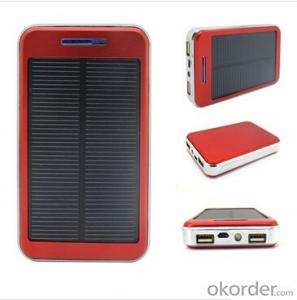Mobile Solar Inverter
Mobile Solar Inverter Related Searches
100w Solar Panel With Inverter Best Solar Panel Inverter 5000 Series Cast Aluminum Plate Portable Solar Panel Inverter First Solar Series 6 Module 12 Volt Solar Panel Inverter Plastic Solar Lanterns Buy Solar Panel Inverter Solar Panel Inverter Cost Solar Panel Without InverterHot Searches
Type Of Inverter For Solar Types Of Inverter For Solar Used Solar Inverter For Sale Inverter Size For Solar System Solar Edge Inverter For Sale 5kw Solar Inverter For Sale Solar Inverter For Sale Solar Inverter For Battery Solar Inverter For Split Ac Solar Inverter For Laptop Solar Inverter For Fridge Solar With Inverter Price Solar Inverter With 2 Battery Solar Inverter Price In China Best Solar Inverter In China Solar Inverter Price In Dubai Solar Inverter Price In Uae Solar Inverter Price In Kenya Solar Inverter Price In Kerala Solar Hot Water Collectors For SaleMobile Solar Inverter Supplier & Manufacturer from China
Okorder.com is a professional Mobile Solar Inverter supplier & manufacturer, offers integrated one-stop services including real-time quoting and online cargo tracking. We are funded by CNBM Group, a Fortune 500 enterprise and the largest Mobile Solar Inverter firm in China.Hot Products
FAQ
- A solar inverter communicates with other components of a solar power system through wired or wireless connections. It typically uses communication protocols such as Modbus, CAN bus, or Ethernet to exchange data with devices such as solar panels, batteries, energy meters, and monitoring systems. This communication enables the inverter to receive information about the solar panel's output, battery status, and energy consumption, allowing it to optimize power generation and manage energy flow within the system.
- Some indicators of a faulty solar inverter include a complete loss of power generation, inconsistent or fluctuating power output, unusual noises or smells coming from the inverter, error messages or warning lights on the display panel, and physical damage or overheating of the inverter unit.
- The working principle of photovoltaic grid - connected inverter
- Inverter will be converted into alternating current DC, if the DC voltage is low, then through the AC transformer boost, that is, the standard AC voltage and frequency. For large-capacity inverter, because the DC bus voltage is high, AC output generally does not require transformer boost that can reach 220V, in the small and medium capacity of the inverter, because the DC voltage is low, such as 12V, 24V, It is necessary to design a boost circuit.
- The maximum DC input current for a solar inverter will depend on the specific model and specifications of the inverter being used. It is important to refer to the manufacturer's documentation or consult the product's technical specifications to determine the maximum DC input current for a particular solar inverter.
- The role of a remote monitoring system in a solar inverter is to provide real-time data and analysis of the performance and operation of the solar inverter. It allows for remote access and control, enabling solar system owners and operators to monitor the energy production, detect any issues or faults, and optimize the performance of the solar inverter from a remote location.
- Yes, a solar inverter can be used with a solar-powered electric vehicle charging infrastructure. The solar inverter converts the direct current (DC) produced by the solar panels into alternating current (AC) which is compatible with the electric vehicle charging system. This allows for the utilization of solar energy to power the charging infrastructure for electric vehicles.
- Yes, solar inverters do produce some noise emissions. However, the noise levels are generally very low and often not noticeable, as the inverters are designed to operate quietly.
- A solar inverter converts direct current (DC) into alternating current (AC) by utilizing a two-step process. First, it converts the DC electricity generated by solar panels into a high-frequency AC waveform. This is done by using electronic components, such as transistors or power semiconductors, to switch the DC input on and off rapidly. Next, the high-frequency AC waveform is transformed into a stable and synchronized AC output that is suitable for use in home or commercial electrical systems. This is achieved through the use of filters, transformers, and other circuitry that adjust the voltage, frequency, and waveform of the AC output to match the requirements of the utility grid or the electrical load being powered. Overall, the solar inverter's key function is to efficiently convert the DC electricity produced by solar panels into a usable form of AC electricity that can be used to power appliances, machinery, and other electrical devices.














































